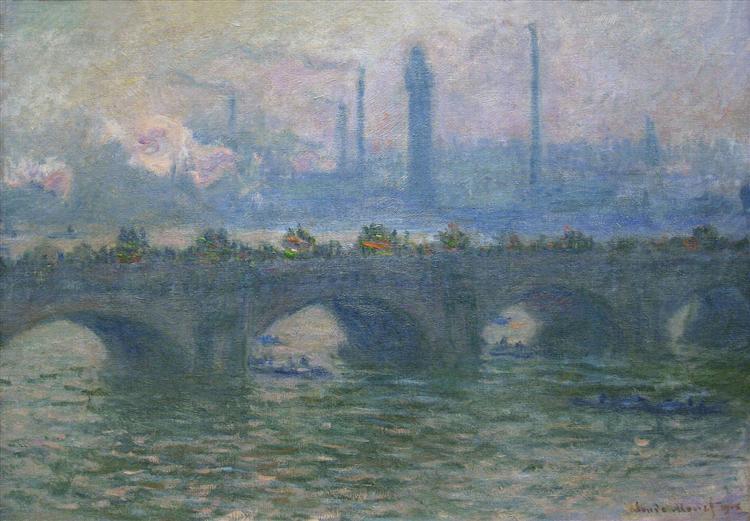Description
The painting "Waterloo Bridge - 1901" by Claude Monet is a masterpiece that encapsulates the essence of Impressionism, an artistic movement that revolutionized the way light and color were perceived and represented. Monet, one of the most prominent representatives of this style, is deeply interested in atmospheric effects and the transience of light, capturing ephemeral moments that often escape everyday experience. In this work, Waterloo Bridge in London is presented not just as a mere architectural object, but as a symbol of the encounter between nature and modernity.
The composition is dominated by a misty, ethereal atmosphere that blurs the contours and suggests a view of the city shrouded in the fog characteristic of London. The painting uses a subtle color palette, where grays, blues and lilacs predominate, contrasting with the flashes of warm light on the horizon. Monet reveals an exceptional mastery in the representation of water and reflection, using quick, loose brushstrokes to suggest the movement and transformation of light as it interacts with the surface of the River Thames. His use of the loose brushstroke technique allows the viewer to feel the immediacy and transience of the moment, inviting them to become part of the visual experience.
The absence of human figures in this depiction of the bridge is notable, a feature that facilitates the contemplation of the landscape itself and enhances the relationship between the natural environment and the man-made work. This can also be interpreted as a comment on the industrialisation of the time; rather than emphasising the influence of man, Monet chooses to highlight the effect of the atmosphere on the structures. The choice to depict the bridge at different times of the day and under various weather conditions is a recurring approach in Monet's work, allowing for a visual experience that transcends time and space.
"Waterloo Bridge - 1901" is part of a series of works that Monet devoted to this theme, exploring the same setting at different times of the day, highlighting his fascination with changing light and its ability to alter the perception of the same object. This series can be seen as a testament to the artist's evolving approach to the study of light and its effect on colour and form, a concept that became central to his later practice. Furthermore, Monet's explorations of Waterloo Bridge occurred at a time of great transformation for London, with the spread of industrialisation and a new modernity also reflected in his work.
In conclusion, “Waterloo Bridge – 1901” stands as a sublime representation of the intersection between nature and urbanity, capturing an instant in time that, imbued with a rich atmosphere, becomes a visual poem. Monet, through his masterful handling of color and light, not only injects life into an urban landscape, but also invites reflection on change, memory, and the ephemeral experience of the moment. The work continues to bring us closer to Monet’s innovative perspective and his deep connection with the environment, a legacy that continues to resonate in contemporary art.
KUADROS ©, a famous painting on your wall.
Hand-made oil painting reproductions, with the quality of professional artists and the distinctive seal of KUADROS ©.
Painting reproduction service with satisfaction guarantee. If you are not completely satisfied with the replica of your painting, we will refund 100% of your money.

